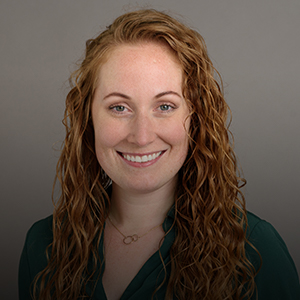
Inside our eyes, we have a natural lens that bends (refracts) light to help us see. When we are young, this lens is clear and flexible. The flexing of the lens allows for accommodation (focusing) at near targets. Over time, the lens becomes cloudy and rigid. The rigidity of the lens results in our need for reading glasses (loss of focusing abilities). The cloudiness is the development of cataracts.
Aging is the number one cause of cataract development. As we age, the proteins of the natural lens start to break down and clump together, causing the lens to become cloudy. These changes can start around the age 40, but do not start to affect vision until later years. Cataracts tend to develop slowly, but certain types may develop more quickly.
Types of Cataracts
Age-related cataracts: This is the most common type of cataract. It is due to the natural changes related to aging.
Congenital cataracts: Sometimes babies are born with cataracts or children develop them in childhood. Some congenital cataracts do not affect vision; however, some do and must be removed.
Secondary cataracts: These can happen because of certain medical conditions, such as diabetes, or side effects to medications, such as corticosteroids.
Traumatic cataracts: an injury to the eye can cause the development of a cataract. This can happen right after the accident or years later.
What causes cataracts?
The exact cause of cataracts is not known. However, there are several risk factors that can put you at a higher risk for developing cataracts.
Having a family history of cataracts
Excessive exposure to ultraviolet (UV) rays without protection
Certain medical conditions, such as diabetes, or nutritional deficiencies
Past eye injury, surgery, or radiation treatments on your upper body
Certain medications, such as corticosteroids
Smoking
Alcohol use
What are symptoms of cataracts?
Blurred vision
Sensitivity to light and glare, lights causing a halo
Difficulty seeing at night
Need for brighter light when reading
Frequent changes in eyeglass or contact lens prescription
Fading or yellowing of colors
How are cataracts diagnosed?
During your yearly eye exam, our eye care team will ask about your health history and give a comprehensive eye exam. Multiple tests are performed to determine if cataracts are present and if they are affecting vision. Some common tests include:
Visual acuity test: the common eye chart test that measures your level of vision
Glare test: measuring visual acuity while looking towards a bright light source to determine if glare impacts your level of vision
Pupil dilation: the pupil is widened (dilated) with eye drops to allow a close-up examination of the natural lens of the eye
How are cataracts treated?
Treatment will depend on your symptoms, age, health, and advancement of the cataracts.
In early stages, vision may be helped with different eyeglass prescriptions or stronger task lighting. When these are no longer helpful, cataract surgery is the only effective treatment. Cataract surgery only needs to be performed when vision loss (blurriness) from the cataracts starts to impact your daily activities, such as driving, reading, or watching television.
Cataract surgery is not only one of the most common surgeries in the U.S., but it is also one of the safest and most effective. Cataract surgery is done by removing the cloudy lens and replacing it with a clear, artificial lens. You will not see or feel the new lens as it is part of your eye, like your old lens. Also, you will not need to repeat cataract surgery, as the artificial lens does not need to be replaced.
How can you prevent cataract development or slow down progression?
No studies have proved prevention or slowed development of cataracts, but health care professionals believe several strategies may be helpful.
Regular eye exams: eye exams can help detect cataracts and other eye problems at their earliest stages.
Quit smoking: smoking is a risk factor for cataract development and progression.
Manage other health conditions: certain medical conditions can increase risk of cataract development and progression. Follow your treatment plan provided by your primary care provider or other healthcare professionals.
Choose a healthy diet: adding fruits and vegetables to your diet can ensure consumption of many vitamins and nutrients. Fruits and vegetables contain antioxidants, which help maintain the health of your eyes.
Wear sunglasses: ultraviolet light from the sun may cause development and progression of cataracts. Wear sunglasses that block ultraviolet B rays when you are outdoors.
Reduce alcohol use: excessive consumption of alcohol can increase the risk of cataracts.
If you are experiencing any symptoms related to cataract development or are concerned about cataracts, please contact our clinic to schedule a comprehensive eye appointment today.

Aging is the number one cause of cataract development. As we age, the proteins of the natural lens start to break down and clump together, causing the lens to become cloudy. These changes can start around the age 40, but do not start to affect vision until later years. Cataracts tend to develop slowly, but certain types may develop more quickly.
Types of cataracts
Age-related cataracts: This is the most common type of cataract. It is due to the natural changes related to aging.
Congenital cataracts: Sometimes babies are born with cataracts or children develop them in childhood. Some congenital cataracts do not affect vision; however, some do and must be removed.
Secondary cataracts: These can happen because of certain medical conditions, such as diabetes, or side effects to medications, such as corticosteroids.
Traumatic cataracts: an injury to the eye can cause the development of a cataract. This can happen right after the accident or years later.
What causes cataracts?
The exact cause of cataracts is not known. However, there are several risk factors that can put you at a higher risk for developing cataracts.
Having a family history of cataracts
Excessive exposure to ultraviolet (UV) rays without protection
Certain medical conditions, such as diabetes, or nutritional deficiencies
Past eye injury, surgery, or radiation treatments on your upper body
Certain medications, such as corticosteroids
Smoking
Alcohol use
What are symptoms of cataracts?
Blurred vision
Sensitivity to light and glare, lights causing a halo
Difficulty seeing at night
Need for brighter light when reading
Frequent changes in eyeglass or contact lens prescription
Fading or yellowing of colors
How are cataracts diagnosed?
During your yearly eye exam, our eye care team will ask about your health history and give a comprehensive eye exam. Multiple tests are performed to determine if cataracts are present and if they are affecting vision. Some common tests include:
Visual acuity test: the common eye chart test that measures your level of vision
Glare test: measuring visual acuity while looking towards a bright light source to determine if glare impacts your level of vision
Pupil dilation: the pupil is widened (dilated) with eye drops to allow a close-up examination of the natural lens of the eye
How are cataracts treated?
Treatment will depend on your symptoms, age, health, and advancement of the cataracts.
In early stages, vision may be helped with different eyeglass prescriptions or stronger task lighting. When these are no longer helpful, cataract surgery is the only effective treatment.
Cataract surgery only needs to be performed when vision loss (blurriness) from the cataracts starts to impact your daily activities, such as driving, reading, or watching television.
Cataract surgery is not only one of the most common surgeries in the U.S., but it is also one of the safest and most effective. Cataract surgery is done by removing the cloudy lens and replacing it with a clear, artificial lens. You will not see or feel the new lens as it is part of your eye, like your old lens. Also, you will not need to repeat cataract surgery, as the artificial lens does not need to be replaced.
How can you prevent cataract development or slow down progression?
No studies have proved prevention or slowed development of cataracts, but health care professionals believe several strategies may be helpful.
- Regular eye exams: eye exams can help detect cataracts and other eye problems at their earliest stages.
- Quit smoking: smoking is a risk factor for cataract development and progression.
- Manage other health conditions: certain medical conditions can increase risk of cataract development and progression. Follow your treatment plan provided by your primary care provider or other healthcare professionals.
- Choose a healthy diet: adding fruits and vegetables to your diet can ensure consumption of many vitamins and nutrients. Fruits and vegetables contain antioxidants, which help maintain the health of your eyes.
- Wear sunglasses: ultraviolet light from the sun may cause development and progression of cataracts. Wear sunglasses that block ultraviolet B rays when you are outdoors.
- Reduce alcohol use: excessive consumption of alcohol can increase the risk of cataracts.
- If you are experiencing any symptoms related to cataract development or are concerned about cataracts, please contact our clinic to schedule a comprehensive eye appointment today.












